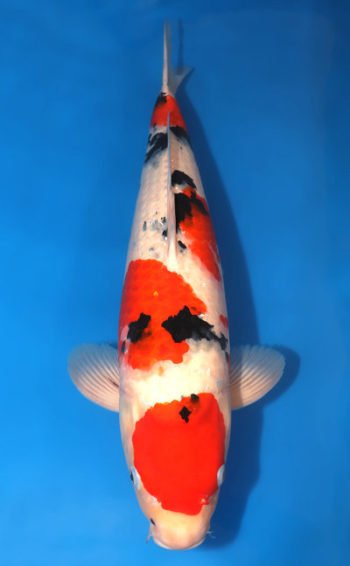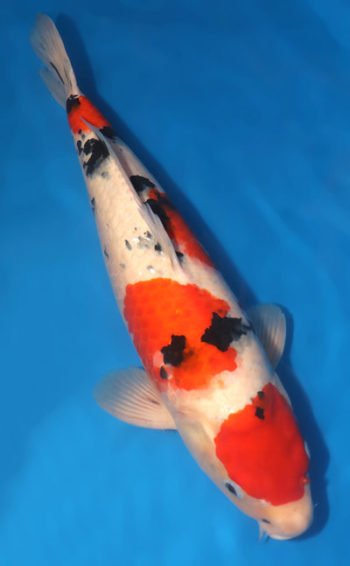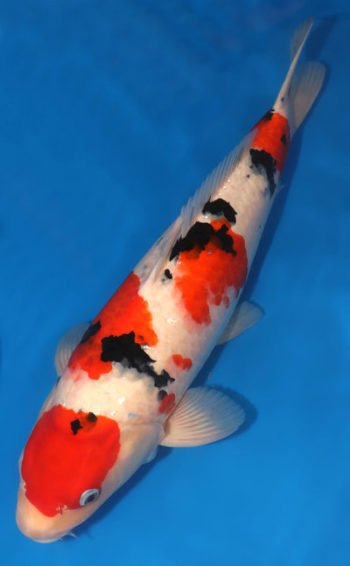Taisho Sanke Koi 21.26 pulgadas
Vea todos nuestros peces koi de alta calidad a la venta y peces koi mariposa a la venta. Ofrecemos la mejor selección de koi a la venta en la industria. Agregue eso junto con nuestra increíble garantía de llegada en vivo de 14 días y la capacidad de elegir su propia fecha de entrega y tendrá un valor inigualable.
GARANTÍA DE 14 DÍAS SIN PREOCUPACIONES: Ofrecemos un líder en la industria Garantía sin preocupaciones de 14 días para asegurarse de que puede comprar con tranquilidad, sabiendo que siempre estará cubierto.
Criadores: Granja Arowana Paradise
Sexo: Femenino
Tamaño: 21,26 pulgadas
Variedad: Taisho Sanke
$310.00 Original price was: $310.00.$300.00Current price is: $300.00.
Description
Taisho Sanke Koi 21.26 inch For Sale
Taisho Sanke Koi 21.26 inch, the Koi fish hobby can be as addictive as a video game for a teenager. They are a pez of beauty and diverse colors. These spectacular fish can show their personality at meal time. Koi are often overly excited when you feed them and sometimes will display jumping and be trained to eat from your hand. They are omnivorous fish, eating both plants and animals (mostly small crustaceans.) Similar to most nutrition plans, Koi will do best with a properly balanced diet.
When properly cared for in an ideal environment, the Koi will possibly outlive their owners. An average carpas kois lives 23-30 years, but the oldest known Koi fish lived for 226 years. They range in sizes of 2-3 feet and can weigh up to 35-40 lbs. They are a hardy, cold water fish and will flourish in a temperature range of 59-77 degrees F (15-25 degrees C).
Selecting Taisho Sanke Koi
When selecting a Koi fish to raise and possibly show, it is best to consider many factors such as the color, pattern, body, and overall health. Look for a healthy fish without any body deformities or missing fins. The color should be even and pure with a balanced pattern. When judging the body of a Koi, the head should be symmetrical and in proportion to the body.
An easy way to gauge correct proportion is by looking for a smooth transition of the gill plate that divides the head and body. The best Koi shape is larger at the middle with a gradual tapering towards the head and even more so at the tail. Take into consideration the size of the snout and fins.
For the Sanke variety, the white (shiro) body should be a thick, milky white and not have any yellow tinting or blemishes. The red (hi) markings should be solid and evenly colored and the edges (kiwa) should be defined. The hue can range from a bright orange to a deep red tint. The black (sumi) markings should be solid with clearly defined edges as well. The spotting of dark blue or gray can change into black on a young Koi as it matures. Try to avoid Sanke with any black on the head.
Sanke Variety Koi
A (red) hi pattern that moves from the head to tail continuously is known as an Aka Sanke and are less desired. A Tancho Sanke has a red round patch on the head, with no other red on the body. This Sanke variation is highly sought after in Japan because of the similarity in appearance to the Japanese national bird. If there are red markings on the body as well, then it is known as a Maruten Sanke.
The best way to determine what the high quality Koi looks like is to become familiar by looking at photos of Koi, by joining a Koi club and attending Koi shows. With time, research, and experience, any hobbyist will be able to select the best Koi for their pond and enjoy them for many years.
Guía de cuidado de Koi: seis cosas que debe saber sobre su koi
- Nivel de experiencia: Intermedio
- Tamaño: Koi crece hasta 36 pulgadas (91 cm) de largo
- Vida útil: pueden vivir más de 50 años y prosperar en una amplia gama de temperaturas del agua.
- Temperamento: generalmente son pacíficos, pero pueden atacar a los peces más lentos.
- Origen: Son un tipo de carpa originaria de Japón
- ¿Sabías que: los koi pueden aprender a reconocer y tomar comida de sus padres mascotas?
¿Cómo configuro el acuario de mi koi?
- Los koi crecen rápidamente y se vuelven muy grandes. Mantenga koi maduros en un estanque al aire libre de al menos 3 pies de profundidad, con al menos 50 galones de agua por pez.
- Los koi jóvenes se pueden mantener en interiores en un acuario de al menos 29 galones.
- Coloque el acuario en un área tranquila, fuera de la luz solar directa y corrientes de aire.
- Cubra el acuario con una campana para reducir la evaporación y las salpicaduras y para evitar que los peces salten.
- Para transferir nuevos koi al acuario, hazlos flotar en el agua dentro de su bolsa durante unos 10 minutos para que puedan aclimatarse a la nueva temperatura del agua.
- Si está introduciendo koi a una escuela existente en un acuario o estanque, ponga en cuarentena a los nuevos peces en un cuerpo de agua separado durante 2 a 4 semanas para asegurarse de que estén sanos.
- El día de la mudanza, use una red para transferir los koi para que el agua vieja no se mezcle con el agua nueva.
- Ya sea que vivan en el interior o al aire libre, agregue no más de 3 nuevos koi a la vez.
Calor y luz
Los koi al aire libre son resistentes e hibernan bajo el hielo en invierno siempre que su estanque sea lo suficientemente profundo como para no congelarse por completo. (No sobrevivirán en hielo sólido).
El estanque de tu koi debe estar parcialmente sombreado.
Los koi de interior prefieren agua entre 65 y 75 grados Fahrenheit.
Instale una luz dentro de un acuario interior para iluminarlo durante 8 a 12 horas al día.
Temperatura de agua
Los koi son bastante resistentes a la temperatura, incluso pueden hibernar bajo el hielo en invierno. Solo asegúrese de que su estanque tenga al menos tres pies de profundidad; de lo contrario, podría congelarse y los koi no son tan resistentes. Cuando viven en interiores, los koi prefieren el agua fría, entre 65 y 75 grados F (18 a 24 C).
¿Cómo mantengo a mi koi saludable?
Si su koi al aire libre parece no estar comiendo en el invierno, no se preocupe; es normal que dejen de comer a temperaturas inferiores a 40 F. Asegúrese de comunicarse con un veterinario si nota alguno de estos síntomas:
- Patrón de natación inusual
- Delgadez o disminución del apetito
- Hinchazón abdominal
- Piel o aletas inflamadas o descoloridas
- Aletas sujetas a los lados del cuerpo.
- Raspar el cuerpo en las rocas (intermitente)
types of koi fish, koi fish, koi fish price, koi fish pond, koi fish meaning, koi fish for sale, koi fish drawing, koi fish care, koi fish for sale online, butterfly koi for sale, koi fish for sale near me, big koi for sale, buy koi fish cheap, koi fry for sale usa, types of koi fish, koi fish for sale, High Quality Koi, Coy fish, coe fish, showa koi, kohaku koi, tancho sanke, showa fish





Reviews
There are no reviews yet.